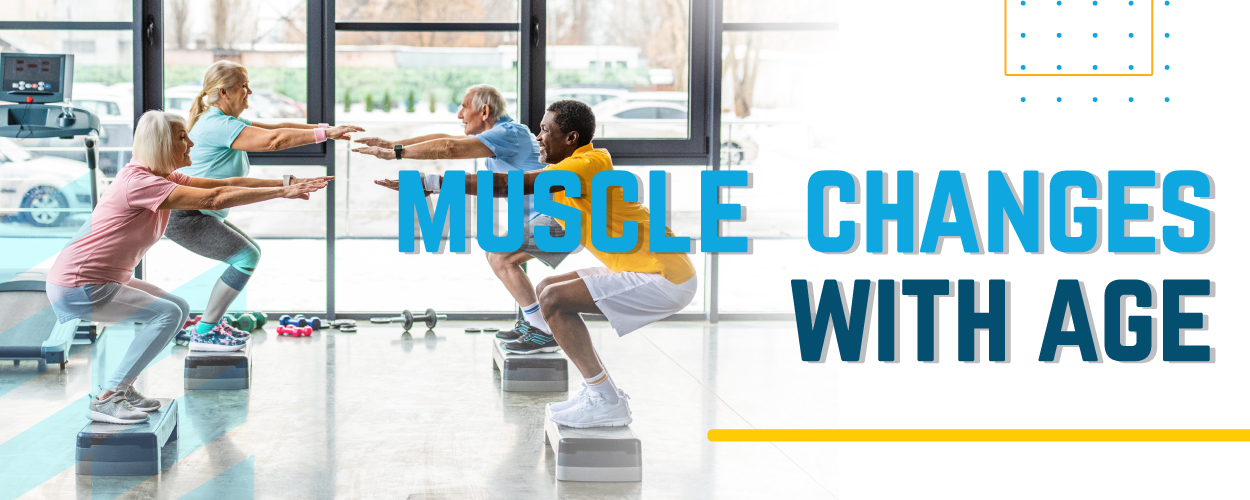If you think that muscle strengthening is only for young people who want to look fit and toned, think again. Muscle strengthening is an important part of health and wellness for people of all ages, especially as you get older. In this blog post, we will explain why muscle strengthening is beneficial for your body and mind, how it changes with age, and what you can do to improve your muscle strength and mass at any stage of life.
Why Muscle Strengthening Matters
Muscle strengthening is not just about aesthetics. It has many benefits for your physical and mental health, such as:
– It helps you maintain or increase your lean muscle mass, which naturally diminishes with age. Losing muscle mass can lead to a lower metabolism, more body fat, reduced strength, and increased risk of falls and injuries.
– It helps you develop strong bones, which can prevent or slow down osteoporosis, a condition that causes your bones to become weak and brittle.
– It helps you manage your weight, by burning calories and boosting your metabolism. This can lower your risk of obesity, diabetes, heart disease, and some cancers.
– It helps you enhance your quality of life, by improving your ability to perform everyday activities, such as carrying groceries, climbing stairs, gardening, or playing with your grandchildren. It can also improve your balance, coordination, flexibility, and posture.
– It helps you manage chronic conditions, such as arthritis, back pain, depression, and anxiety. It can reduce pain and inflammation, improve mood and self-esteem, and increase energy and endurance.
– It helps you sharpen your thinking skills, by stimulating blood flow and oxygen to your brain. It can also prevent or delay cognitive decline and dementia by preserving the connections between brain regions.
How Muscle Strengthening Changes with Age
Muscle strengthening is not something that you can do once and forget about it. It is a lifelong process that requires regular practice and adaptation. As you age, your muscles undergo several changes that affect their size, strength, speed, and function. Some of these changes are:
– You lose muscle fibers and fiber size. This means that you have fewer and smaller muscle cells to contract and produce force. This process starts after age 40 and accelerates after age 60.
– You lose fast-twitch muscle fibers more rapidly than slow-twitch ones. Fast-twitch fibers are responsible for explosive movements, such as sprinting or jumping. Slow-twitch fibers are more suited for endurance activities, such as walking or cycling.
– You lose muscle-building hormones and growth factors, such as testosterone, estrogen, DHEA, growth hormone, and insulin-like growth factor. These hormones stimulate muscle protein synthesis and prevent muscle breakdown.
– You lose the ability to repair muscle damage. As you age, your muscles become less responsive to the signals that trigger repair and regeneration. This can lead to chronic inflammation and fibrosis in your muscles.
– You lose coordination between brain regions that control movement. As you age, your brain may suffer from mini-strokes or loss of dopamine-producing cells that impair the communication between the frontal lobe (which directs movement) and the cerebellum (which corrects movement). This can affect your speed, accuracy, and fluidity of movement.
What You Can Do to Improve Your Muscle Strength and Mass at Any Age
The good news is that you can counteract some of the effects of aging on your muscles by engaging in regular strength training. Strength training is any exercise that challenges your muscles to work against resistance. This can include lifting weights, using resistance bands or machines, doing bodyweight exercises, or using cable suspension training.
Here are some tips on how to start or maintain a strength training program at any age:
– Consult with your doctor before starting a strength training program if you have a chronic condition or if you are older than 40 and have been inactive for a long time.
– Warm up before each session with some aerobic exercise such as brisk walking or jogging for 5 to 10 minutes.
– Start with light weights or resistance levels that allow you to perform 8 to 15 repetitions per set with good form. Gradually increase the weight or resistance as you get stronger.
– Aim for 2 to 3 sessions per week on non-consecutive days. Rest for at least 48 hours between sessions to allow your muscles to recover and grow.
– Listen to your body and avoid overtraining. If you feel pain, fatigue, or soreness, take a break or reduce the intensity of your workout. If you have any signs of injury or illness, stop exercising and seek medical attention.
Muscle strengthening is not only possible but also essential at any age. By following these tips, you can improve your muscle strength and mass, and enjoy the benefits of a healthier and happier life.
Invest in Better Breaths, Support TB Vets, and Transform Lives – Donate today at tbvets.org/donate, because every contribution ensures hospitals in British Columbia can continue to provide essential respiratory treatments to seniors and patients in need


